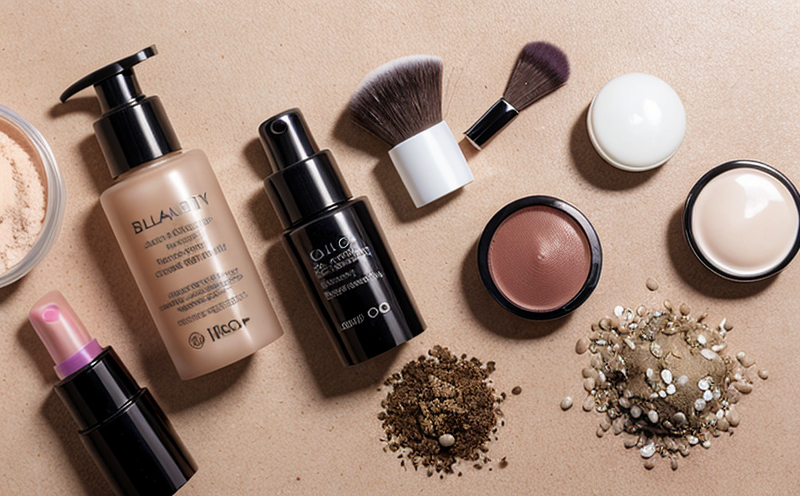Biodegradability Testing of Cosmetic Colorants
The biodegradability testing of cosmetic colorants is crucial in ensuring that these products are environmentally friendly and sustainable. This testing process evaluates the extent to which a cosmetic colorant can be broken down by naturally occurring microorganisms under controlled laboratory conditions. The primary goal is to ensure that the colorants used in cosmetics do not contribute significantly to environmental pollution or harm aquatic ecosystems.
Understanding the biodegradability of cosmetic colorants involves several key parameters, including the time frame for degradation and the extent of breakdown into harmless by-products. This testing aligns with international standards such as ISO 14684 and ASTM D5327-09, which provide robust guidelines for conducting these tests.
During the preparation phase, cosmetic colorants are typically mixed with a standardized inoculum of microorganisms in a nutrient broth. The mixture is then incubated under specific conditions that mimic natural environmental conditions as closely as possible. The process involves regular monitoring to observe changes in the colorant's properties over time.
The testing apparatus used for this purpose includes bioreactors capable of maintaining precise temperature, pH levels, and aeration rates. The results are analyzed using various analytical techniques such as high-performance liquid chromatography (HPLC) and gas chromatography-mass spectrometry (GC-MS), which help in identifying the by-products formed during degradation.
The acceptance criteria for biodegradability testing involve meeting specific thresholds regarding the reduction of initial mass or volume. For instance, a colorant is considered biodegradable if it shows at least 60% degradation within 28 days under standard conditions. Compliance with these standards ensures that cosmetic products meet environmental regulations and can be marketed as eco-friendly.
Compliance officers and R&D engineers play a critical role in ensuring that the testing process adheres to international standards. They must stay updated on new methodologies and regulatory changes to maintain product integrity and avoid potential legal issues. The results of biodegradability tests are crucial for quality managers when selecting sustainable ingredients, as they provide valuable insights into the environmental impact of each colorant.
Understanding the biodegradability testing process is essential for procurement teams who need to source materials that meet stringent environmental standards. By incorporating these tests into their supply chain management, companies can ensure ethical sourcing and contribute positively to global sustainability efforts.
Benefits
- Regulatory Compliance: Ensures that cosmetic colorants meet international environmental standards such as ISO 14684 and ASTM D5327-09.
- Sustainability: Promotes the use of environmentally friendly materials, reducing the ecological footprint of cosmetics.
- Market Advantage: Enhances brand reputation by demonstrating a commitment to sustainability.
International Acceptance and Recognition
- The biodegradability testing process is widely accepted in major markets such as the European Union, United States, and Asia-Pacific region. Compliance with ISO standards is a key factor in gaining market access.
- Countries like Germany, which have stringent environmental regulations, often require proof of biodegradability for imported cosmetic products.
Use Cases and Application Examples
In the context of the cosmetics industry, biodegradability testing is essential for several applications:
- New Product Development: Companies use this test to ensure that new cosmetic colorants meet environmental standards before launching them in the market.
- Sustainability Reporting: Incorporating biodegradability results into sustainability reports helps companies communicate their commitment to environmental responsibility.
- Risk Management: Testing can help identify potential risks associated with using certain colorants that may not degrade properly, allowing for timely corrective actions.
An example application is in the development of a new lipstick formula. By conducting biodegradability tests on the chosen colorant, researchers can ensure it meets environmental standards and does not pose risks to aquatic ecosystems if accidentally released into the environment.





